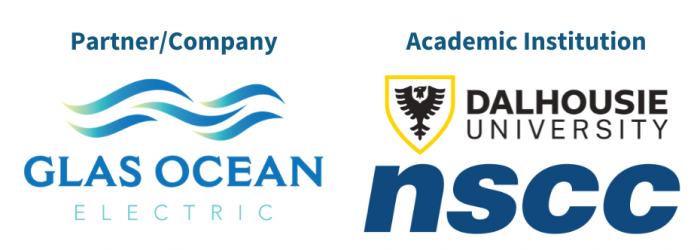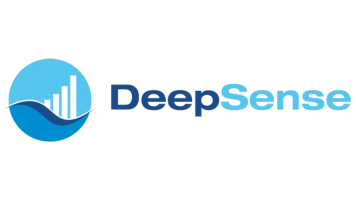Projects
Table of Contents
Identification of high-frequency periodic acoustic fish tags with deep learning
Project Type
AI & Machine Learning
Area/Sector
Aquaculture
Lead Investigator
Dr. Stan Matwin
HQP’s
Santosh Medisetty
Kayalvizhi Thanigainathan
Problem: Researchers must search through a database of acoustic data to find specific data points. It is time-consuming and inefficient use of researchers’ time.
Solution: A machine learning model was trained to be able to identify acoustic pings that are connected to specific tags, making tracking tags more easy.

Integrating multiple deep learning models to track and classify at-risk fish species near commercial infrastructure
Problem: A manual process in counting fish required significant human effort to review a range of data types, including video footage. The process to review was time-consuming to search and find patterns in.
Solution: Train a computer to be able to identify various types of media and then connect them to each other in order to efficiently track trajectories.

Project Type
AI & Machine Learning
Area/Sector
Marine Energy
Lead Investigator
Dr. Chris Whidden
HQP’s
Vishnu Kandimalla
Shyam Aghara
Akhilesh Varma Bhupathiraju
Pairing Meteorological and Power Data for Marine Hybrid Electric Boats
Project Type
AI & Machine Learning
Area/Sector
Marine Operations
Lead Investigator
Dr. Chris Whidden
HQP’s
Mohamed Muzamil H
Rex Ramos
Karansingh Sudhirsingh
Problem: Merging data from a range of sources to develop a prediction model about the power usage of vessels.
Solution: A light weight prediction model was developed to guide future data collection and optimize movement speeds and consumption to limit environmental impacts.

Benthic Ecosystem Mapping and Engagement (BEcoME project)
Problem: A large image repository where photos need to be identified based on certain characteristics, but the process is time-consuming and prone to error.
Solution: A deep learning model trained to identify photos quickly and efficiently, reducing human error.

Project Type
AI & Machine Learning
Area/Sector
Ocean health
Lead Investigator
Dr. Chris Whidden
HQP’s
Dr. Scott Lowe
Amit Robert Baroi
Phase 2: Smart Buoy Redundancy Model Optimization
Project Type
AI & Machine Learning
Area/Sector
Logistics
Lead Investigator
Dr. Luis Torgo
HQP’s
Amruth Sagar Kuppili
Problem: A fail-safe for when the main data source is not available to provide up-to-date information.
Solution: Provide redundancy in the measured variables that will be able to predict conditions in case the main source goes offline.

Automating the Analysis of Fish School Recognition in Echograms in the Bay of Fundy
Problem: Labour intensive effort to write complex detailed reports based on processed acoustic data.
Solution: Write R script that will provide a template quarterly and annual report.

Project Type
Advanced Analytics
Area/Sector
Renewable energy
Lead Investigator
Dr. Stan Matwin
HQP’s
Mahtab Sarvmaili
SeRViz: an Interactive Visualization Framework for the Analysis of Sequential Rules and Frequent Itemsets
Project Type
Data Visualizations
Area/Sector
Logistics
Lead Investigator
Dr. Fernando V. Paulovich
HQP’s
Asal Jalilvand
Problem: Complex data from a range of sources can be difficult to comprehend and analyze. Dozens of patterns in events occur, each with a different outcome.
Solution: Create a data visualization dashboard that displays the data in easily consumable way, and allows for the emergence of patterns.

Shipping Container Code Classification and Prediction
Problem: Significant volumes of data requires cleaning prior to being processed. It is a labour intensive and error prone process to address repetition, inconsistencies, and errors in the data.
Solution: A model was developed to help automate and expedite the cleaning and processing of data, reducing human effort.

Project Type
Advanced Analytics
Area/Sector
Logistics
Lead Investigator
Dr. Vlado Keselj
HQP’s
Tukai Pain
Shaikh Mushfiur
Whales from Space: Surveying Baleen Whales in the Gulf of St. Lawrence using VHR Satellite Imagery
Project Type
AI & Machine Learning
Area/Sector
Logistics
Lead Investigator
Dr. Boris Worm, Dr. Sageev Oore
HQP’s
Mirerfan Gheibi
Problem: Hundreds of thousands of images needed to be reviewed created significant human effort to sort and identify whales and other mammals.
Solution: A model was developed to quickly sort through images, reducing human effort by more than half.

Phase 1: Smart Atlantic Buoy Redundancy Model Prototype
Problem: Buoy data is required for port decision making, without an alternative to identify values when the buoy is unavailable.
Solution: Identify and collect a broad range of land station and buoy data to explore a range of algorithms to determine determine if machine leaning can predict the wind speed and wave height from the Smart Atlantic Buoy.

Project Type
Predictive Model
Area/Sector
Marine Operations
Lead Investigator
Dr. Luis Torgo
HQP’s
Jesuseyi Fasuyi
Tracking Illegal Fishing with AIS Data
Project Type
AI and Machine Learning
Area/Sector
Fisheries, Marine Risk
Lead Investigator
Dr. Stan Matwin
HQP’s
Gashin Ghazizadeh
Problem:Some vessels in the ocean are fishing illegally and can be difficult to find and identify.
Solution:Computer vision tracks vessel AIS data to identify those operating illegally fishing vessel patterns and behaviours.

Automatic detection and classification of marine biogenic habitats, species and substrates
Problem: There is an increasing demand for imagery data to monitor coastal and offshore Canadian waters.
Solution: Develop an Artificial Intelligence (AI) powered software that classifies more than 30 features including species and types of habitats in the coastal subtidal zone of the Atlantic Coast of Nova Scotia.

Project Type
AI and Machine Learning
Area/Sector
Ocean health
HQP’s
Harsh Gawai
Arka Ghosh
eDNA Data Organization
Project Type
Data Strategy
Area/Sector
Ocean health
HQP’s
Michael Wright
Problem: New software requires eDNA data input in a specific format that differs from current data storage methods.
Solution: Streamline and clean eDNA data and create a data pipeline for new input interface for future applications.

Crustacean Carapace Assessment: Model Training
Problem: Fishers manually evaluate crustaceans carapace on-vessel during fishing.
Solution: Optimize on-vessel decision-making and crew time by measuring and evaluating crustaceans through a machine learning model output.

Project Type
AI and Machine Learning
Area/Sector
Fisheries
HQP’s
Ibrahim Oguntola
Active Learning for Fish School Recognition
Project Type
AI and Machine Learning
Area/Sector
Renewable Energy
Lead Investigator
Dr. Sageev Oore
HQP’s
Dr. Scott Lowe
Problem: The scale at which data is collected is ever increasing, since static echosounder stations can collect data around the clock, endlessly, at a pace that can not be matched by human analysts performing manually annotations.
Solution: Echofilter replaces a complicated and time-consuming manual process, reducing the total time required for a human to pre-process the data by more than half.

